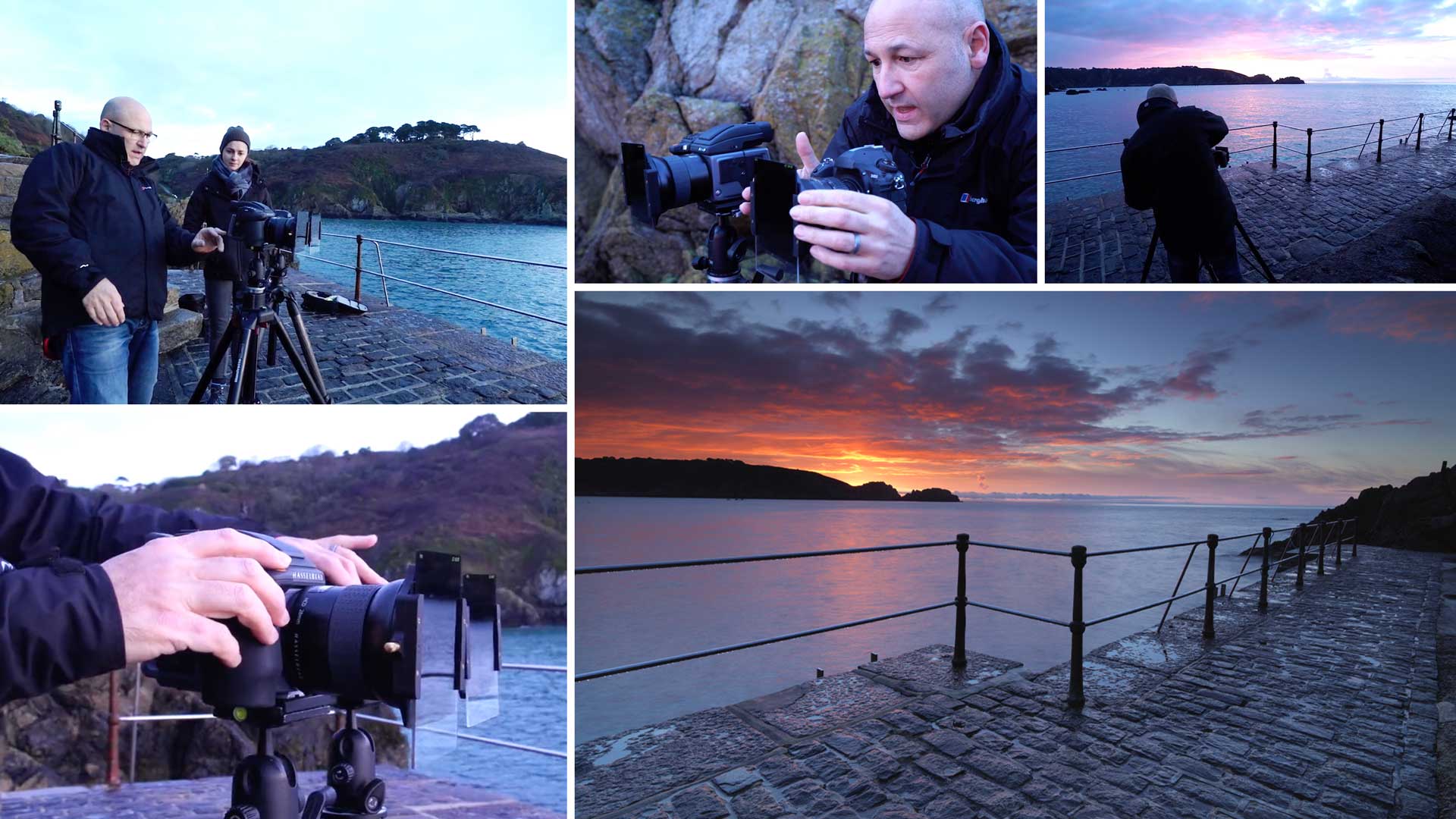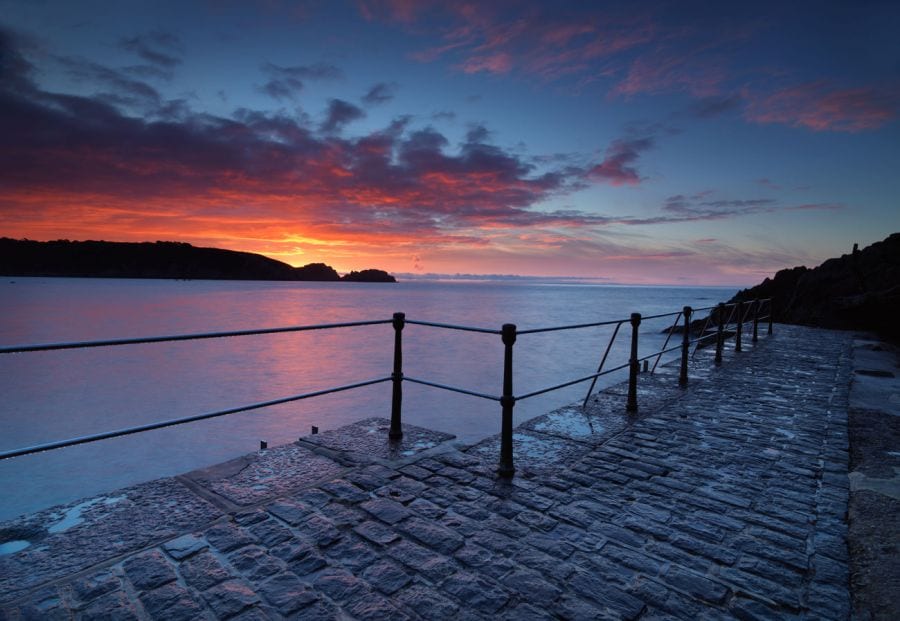Sunrise Landscape Photography
When it comes to sunrise photography, timing is everything. Take too long prepping and setting up your shot and the magic moment may pass.
In this landscape photography class, Karl sets up and shoots a series of images in a very short space of time, demonstrating how to adjust your camera settings to suit the changing light.
He also goes into detail about the filters he’s using, when and how to use both soft and hard graduated neutral density filters, and how, when used correctly, they eliminate the need for compositing shots together.
In this class:
- Landscape photography
- How to photograph sunrises
- Working with filters
- Hard and soft ND filters
- Determining and adjusting exposure for changing light
Questions? Please post them in the comments section below.



Comments
Hello Karl,
I enjoyed the video. Where is your focus point? Do you use manual or auto focus?
Thank you,
Evgenia
Hi Karl,
I enjoyed the video. What was finally the difference between the D850 and the Hasselblad?
The D850 was very good but you had to use the absolute best lenses available to get the best out of it which was a shame as any of the Hasselblad lenses were to the right standard. It didn’t have quite the performance in tonal range but for a 35mm camera it was very good and I would certainly consider it if I was buying 35mm again.
Isn’t that an “unfair” comparison – considering that the cheapest Hasselblad lens i can find is around 4K in CHF, and the most expensive Nikon is a lot less than that. So the top of the line of Nikon is good enough to compete. I can live with that.
Hi Frank, yes it wasn’t a good comparison and in fact a Nikon prime lens we used in a studio test comparison performed very very well. We’ve also found some of the Sony lenses to perform superbly. The advantages that medium format has is the bigger sensor recording area which does result in better transitional tones but the 35mm cameras of today deliver exceptional results.
Karl did I hear correctly that you used both a grad filter and a Full ND filter for these shots? Together.
Also, I was surprised at how pin sharp the foreground was, without focus stacking. Is that expected at F16, or are your lenses/cameras providing more than a typical setup.
Hi Erick, yes I often use a solid ND and a grad together. And yes f16 is my usual call on these sort of shots and I’ll choose my focus point based on the overall composition and what I really need sharp so quite often my horizon isn’t pin sharp but that’s often in haze anyway and clouds and sun don’t matter if they are not pin sharp because you can’t really tell the difference.
Thats great, that is super helpful. But one more question, was the ND filter used to soften/blur the water? I am trying to understand when/why you would use a full ND filter with the grad filter vs just adjusting the shutter speed to darken the exposure (or ISO etc).
Hi Erick, I wasn’t using the ND filter to darken the exposure I’m using it to force the exposure to need a longer/slower shutter speed so that I can blur the movement of the water, whereas a faster shutter speed would freeze the water. The ND grad filter is used to darken the sky only.
That is what I meant! Got it that makes perfect sense.
Karl:
For sunrise (or sunset) photography with the graduated filters, is it best to use a fixed focal length Iens or can a zoom lens work? I’m considering purchasing a couple fixed lenses and am not sure what to look at first. For now I’ve been using my Nikkor 24-70mm with a variable ND filter with some success.
Hi John, grads work perfectly well with zoom lenses although you may need to adjust there position slightly as the act of zooming will be changing your composition and the position of your horizon. Variable ND filters use 2 polarizers combined and I don’t think they are a very accurate way of doing things. You are much better using Grads that slide up and down to correct your sky exposure and fixed ND filters such as 3 or 4 stops to get a cleaner image.
Hi Karl, I’m talking about Brazil, I live in the state of Amapá, in the middle of the Amazon forest, our state is the most preserved state in the Amazon, the Amazon River is in front of our city, we have beautiful scenery, I am very anxious to put in practice everything you’ve been taught, you make everything look easy, kkkk, my question is: What Picture Style do you use on the Canon 5D mark III?
Andre Uchoa.
Hi Andre, I use the standard profile on the 5D and Adobe RGB 98 colour space on the camera.
Mr. Taylor – that was a fantastic shot. Very, very somber.
Cheers
Hello Karl,
How do you determine how much light it is that younger to block ?
Thanks,
Philip
Hi Philip I’m sorry but I don’t understand the question?
Hello Karl,
I apologise, it’s only now that I see that my autocorrect was still in another language. My question is, you talk about different gradients and different amount of stops when it comes to filters. For example one filters blocks light for 3 stops others for 2 stops and so. But on a shot like that early in the morning. How do you determine amount of light you want to block. One ND filter can be to dark and other can be to light, or do you just put on filter and play with the shutter speed until you have the exposure that you want.. thanks for getting back to me
Hi Philip, I always start with a 3 stop filter and if it’s too much I drop to a 2 stop and if it’s not enough I could go to a four stop filter but it is that and as you said play around with it in combination with adjusting your camera settings if necessary.
Hello Karl,
Thank you for clearing that up. I really appreciate it that you are taking your time to answer my question. I really love your online program, I am literally glued to my iPad.
Thanks
Best regards
Good day Karl.
Trust you are doing well.
I remember in one of your responses to a question in one of the classes , can’t remember which one now, where you you responded to a WB question that you usually set your WB to 5500/5800 -6000.
My question now is, with the graduated filter used here, what was your WB setting for the shot? Is it just the timing of the day and sunlight intensity that has created this three moods in the shots?
Hi Laurenta, my WB would have been at 5600K which is what it is usually at. The colour was very intense as it was a great sunrise, an ND filter darkens things and when we darken colours they also look more saturated.
Hi karl,
Good Morning!
in the video you have put your camera just above the railing. What is the reason behind it. How it would have effected if you had put the camera a bit higher /
Hi, this was simply the composition that I felt worked best for the final shot. If the camera had been higher then the railing would have been lower in the composition.
Hi! When using a grad ND filter, do you then lift any dark rocks etc. which jut up on the horizon line in post?
Hi Amanda, yes but if it’s a soft grad you don’t really notice the effect as it is very gradual. Also you can angle the grad to allow for rocks coming in at a diagonal etc.
Thanks, Karl
I’m looking to buy my first Grad ND filter. While I realize lighting conditions will determine which to use, what would be a good choice to start with as far as stops. 1 stop? 3 stops,etc. ? Can only afford one at the moment and I’d like to find something that will help in multiple situations. Just joined and I’ve already learned so much. Loving these videos. Thank you!!
Hi, 3 stops (0.9ND grad) is the best option.
Hi Karl, I have a main question for you, I see that you’re shooting at f16. Is it true, though, that over f8 you can start to see diffraction due to the fact that the light is passing through a too small hole and bouncing on the corners of the blades? I mean, is that just a myth that the sweet spot resides between f8 and f11? Thank you
Hi Haitham, it depends on the lens, each one is different. Diffraction becomes a problem for me at f22.
Hi sir, can you explain the composition in the photo and what is the most important thing in landscape photography ?
Thanks Sir
Hi Fajar, please watch our composition or emotion of light chapters to learn more about that. But I’d say the most important thing in any photography is holding the viewers attention for a significant amount of time and invoking a worthy emotional response.
great show , liked the tip about dof button when fitting filter in place ,
other wise love . this is what I love landscape
thank Karl
Hi Karl, Great results! At one point I heard you ask for a flashlight to check focus. Were you using the railings as a focus point due to their position low in the frame?
Hi Peter, yes I wanted to to focus on the railings and then check a test shot to see if my DOF reached the horizon and it did. I could have focused a little further into the scene but it was most important that the railings and foreground cobbles were pin sharp.